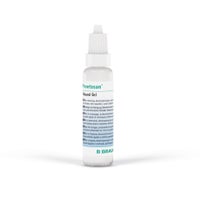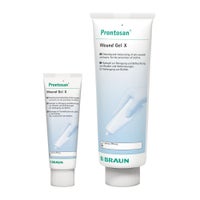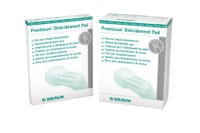|
Effect of a wound cleansing solution on wound bed preparation &inflammation in chronic wounds
|
pdf
(50.1 KB)
|
open
|
|
How to change dressings hygienically_3007_01.18
|
pdf
(3.3 MB)
|
open
|
|
Management of Biofilm
World Union of Wound Healing Societies
|
pdf
(918.3 KB)
|
open
|
|
Pathways to Healthy and Intact Skin
|
pdf
(400.9 KB)
|
open
|
|
Prontosan Case Studies
|
pdf
(2.3 MB)
|
open
|
|
Prontosan Wound Bed Preparation short flyer for professionals
|
pdf
(1.5 MB)
|
open
|
|
Prontosan antibiofilm activity - study summary
|
pdf
(288.7 KB)
|
open
|
|
Prontosan breaks the Biofilm cycle_Flyer_3041_02.17
Flyer
|
pdf
(150.0 KB)
|
open
|
|
Prontosan® Wound bed preparation - Brochure
|
pdf
(1.7 MB)
|
open
|
|
Prontosan® made easy
Wounds International
|
pdf
(293.0 KB)
|
open
|
|
Wound Bed Preparation and Cleansing With Prontosan®
|
pdf
(1.2 MB)
|
open
|
|
880201 - Prontosan® Wound Gel
IFU
|
pdf
(758.9 KB)
|
open
|
|
Prontosan® - Wound Gel/Wound irrigation solution
IFU
|
pdf
(349.0 KB)
|
open
|
|
Prontosan® - Wound Irrigation Solution
IFU
|
pdf
(1.1 MB)
|
open
|
|
Prontosan Wound Irrigation Solution
Safety Data Sheet (EU_en)
|
pdf
(176.6 KB)
|
open
|
|
Independent RCT study showing higher efficiency vs Saline
Abstract of RCT Study on the effectiveness of Prontosan®
|
pdf
(143.6 KB)
|
open
|
|
Prontosan breaks the Biofilm cycle_Poster_3038_02.17
Poster
|
pdf
(195.0 KB)
|
open
|
|
Prontosan Made Easy_05.11
|
pdf
(293.0 KB)
|
open
|
|
Remove barrier to healing_3054_10.18
Meeting Report 2018
|
pdf
(716.5 KB)
|
open
|
|
2021 Oropallo et al: Quality of life improvement in patients withhard-to-heal leg wounds
treated with Prontosan® Wound Irrigation Solution and Prontosan® WoundGel
|
pdf
(650.1 KB)
|
open
|
|
In Vitro Evaluation of Polihexanide, Octenidine and NaClO/HClO-BasedAntiseptics against Biofilm Formed by Wound Pathogens
Chronic wounds complicated with biofilm formed by pathogens remain one of the most significant challenges of contemporary medicine. The application of topical antiseptic solutions against wound biofilm has been gaining increasing interest among clinical practitioners and scientific researchers. This paper compares the activity of polyhexanide-, octenidine- and hypochlorite/hypochlorous acid-based antiseptics against biofilm formed by clinical strains of Candida albicans, Staphylococcus aureus and Pseudomonas aeruginosa. The analyses included both standard techniques utilizing polystyrene plates and self-designed biocellulose-based models in which a biofilm formed by pathogens was formed on an elastic, fibrinous surface covered with a fibroblast layer. The obtained results show high antibiofilm activity of polihexanide- and octenidine-based antiseptics and lack or weak antibiofilm activity of hypochlorite-based antiseptic of total chlorine content equal to 80 parts per million. The data presented in this paper indicate that polihexanide- or octenidine-based antiseptics are highly useful in the treatment of biofilm, while hypochlorite-based antiseptics with low chlorine content may be applied for wound rinsing but not when specific antibiofilm activity is required.
|
pdf
(2.7 MB)
|
open
|
|
JWC - Cleansing vs. tailored deep debridement
Cleansing versustailored deep debridement, a fresh approach
to wound cleansing: anItalian experience
|
pdf
(148.9 KB)
|
open
|









